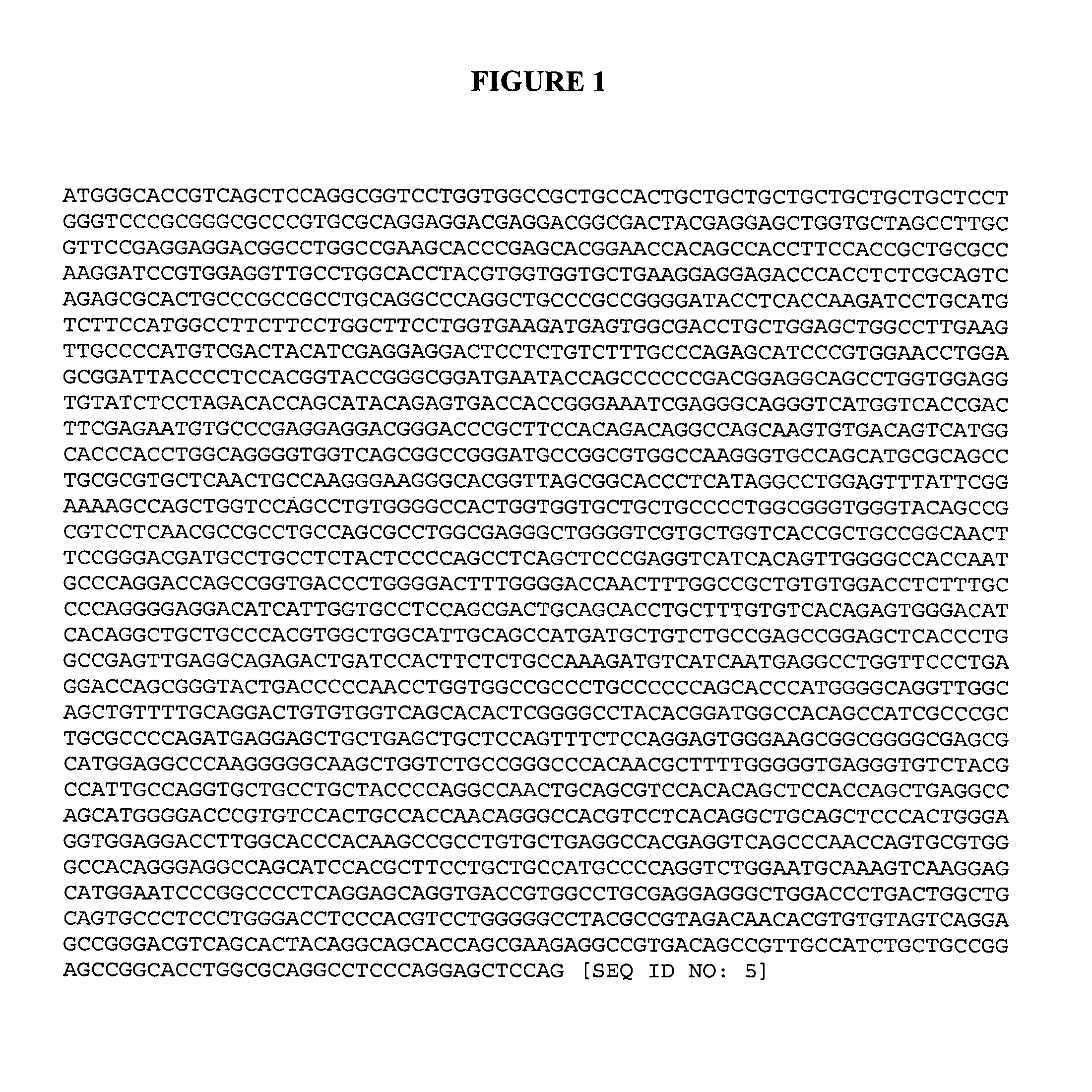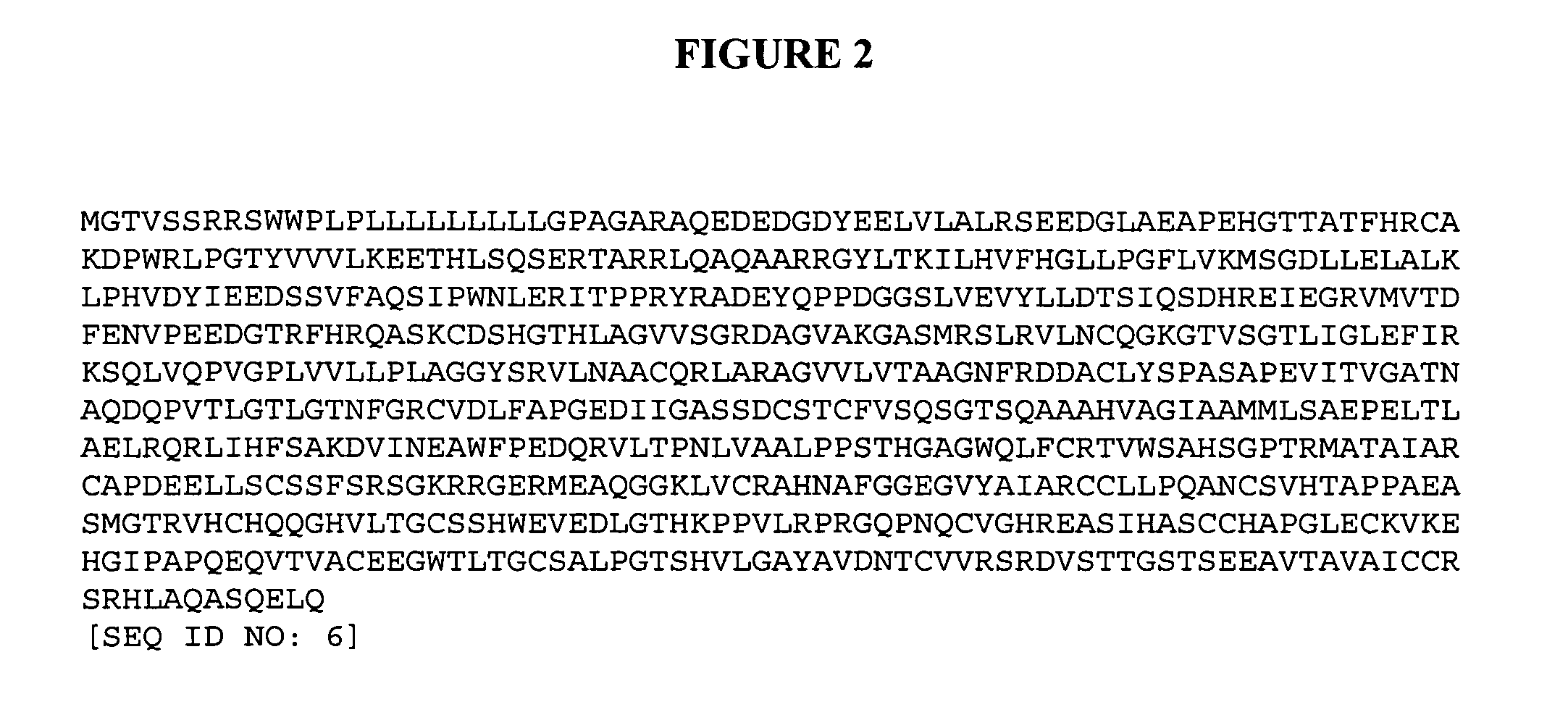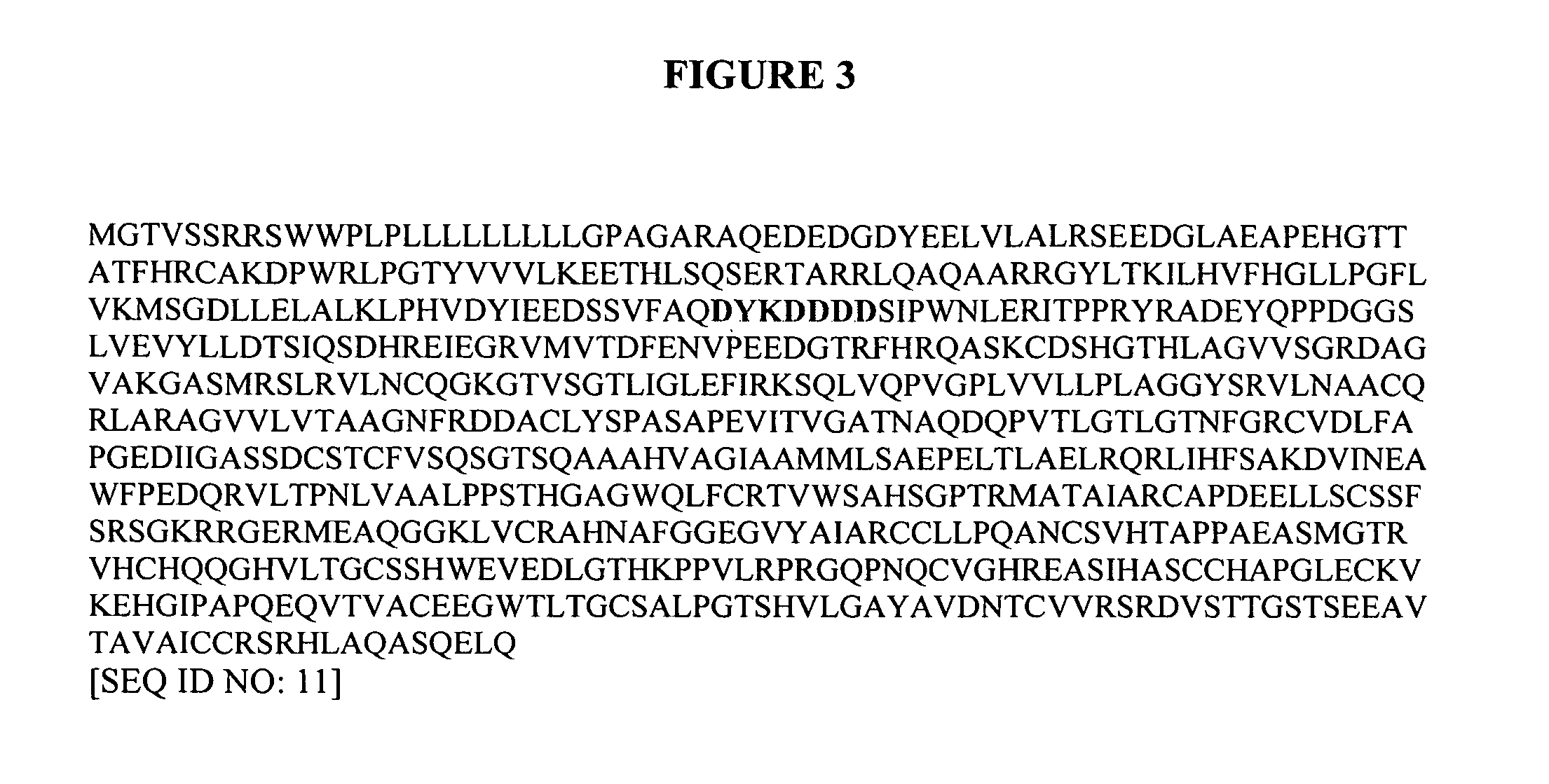Method for detecting autoprocessed, secreted PCSK9
a technology of secreted pcsk9 and autoprocessing, which is applied in the field of effective methods for detecting autoprocessed and secreted pcsk9, can solve the problems of compromising the liver's ability to remove ldl cholesterol from the circulation, and achieve the effect of effective identification of therapeutics and analysis
- Summary
- Abstract
- Description
- Claims
- Application Information
AI Technical Summary
Benefits of technology
Problems solved by technology
Method used
Image
Examples
example 1
Materials
A. PCSK9 Cloning
[0074]The PCSK9 gene was cloned from Human Fetal Liver Quick-Clone cDNA (BD BioScience). Pre PCSK9 forward and reverse primers were used to pre-amplify out the PCSK9 gene; Human Forward Pre PCSK9 primer 5′ to 3′ (DNA) GCA ACC TCT CCC CTG GCC CTC ATG (SEQ ID NO: 1); Human Reverse Pre PCSK9 primer 5′ to 3′ (DNA)-GCT TCC TGG CAC CTC CAC CTG GGG (SEQ ID NO: 2). The PCSK9 gene product was used as a template for Topo TA primers to generate the final PCSK9 sequence; Hum—For-PCSK9 Kozak primer 5′ to 3′ (DNA)—CCA CCA TGG GCA CCG TCA GCT CCA GG (SEQ ID NO: 3); TA-h Rev-PCSK9 (no stop) primer 5′ to 3′ (DNA)—CTG GAG CTC CTG GGA GGC CTG CGC CAG (SEQ ID NO: 4). The final PCSK9 insert was ligated into TOPO® TA vector using a pcDNA3.1 / v5-His Topo® TA Expression kit (Invitrogen), followed by transformation into chemically competent TOP10 E. coli cells. Clones were selected and checked for correct insert by gel electrophoresis and sequenced. The following primers were used fo...
example 2
PCSK9-152FLAG-V5 / His APPEARANCE Time-Resolved Fluorescence Energy Transfer (“TR-FRET”) Assay
[0084]The following TR-FRET-based appearance assay depicted in FIG. 8 was developed by Applicants to detect autoprocessed, secreted PCSK9-152 FLAG-V5 / His protein.
[0085]PCSK9-152FLAG-V5 / His and PCSK9-152FLAG-V5 / His-S386A cells were dissociated from the T-175 flask using Cell Stripper solution (Mediatech), counted and plated at a cell density of 1×106 cells per ml. A range of cells (1562-50,000) per well were provided in a 96 well plate with 50 μl of Phenol Red Free DMEM, 2% FBS-HI, 1×L-glutamine, and 1 mg / ml G418 (Mediatech). Plates were incubated at 37° C., 5% CO2 for 16 hours. Media was removed and combined with 50 μl of 2×TR-FRET Assay Buffer in 96 well black plates (Packard). This 2× buffer consisted of 100 mM Hepes pH 6.5, 100 mM NaCl, 0.1% BSA, 2 mM CaCl2, 100 μM Eu+3 anti-FLAG m1 antibody and 2.6 nM XL665-labeled anti-His antibody (Cis BioInternational). The plates were then incubated a...
example 3
PCSK9 Appearance Assay for Antagonists / Agonists of PCSK9 Processing
[0088]The above findings support the use of such an assay for the evaluation of PCSK9 processing. The concept of identifying secreted PCSK9 with a specific N-terminal epitope exposed only upon processing is useful for the identification and evaluation of inhibitors / activators of PCSK9 processing.
PUM
| Property | Measurement | Unit |
|---|---|---|
| time | aaaaa | aaaaa |
| temperature | aaaaa | aaaaa |
| pH | aaaaa | aaaaa |
Abstract
Description
Claims
Application Information
 Login to View More
Login to View More - R&D Engineer
- R&D Manager
- IP Professional
- Industry Leading Data Capabilities
- Powerful AI technology
- Patent DNA Extraction
Browse by: Latest US Patents, China's latest patents, Technical Efficacy Thesaurus, Application Domain, Technology Topic, Popular Technical Reports.
© 2024 PatSnap. All rights reserved.Legal|Privacy policy|Modern Slavery Act Transparency Statement|Sitemap|About US| Contact US: help@patsnap.com










